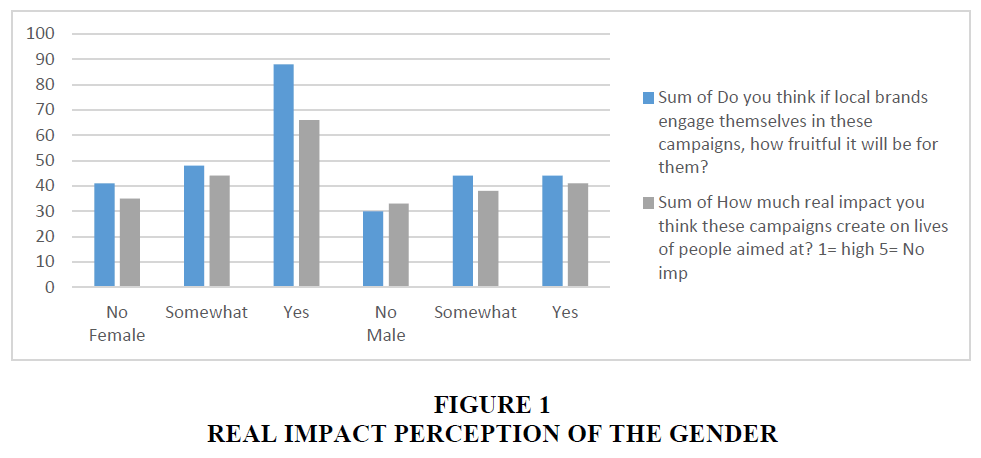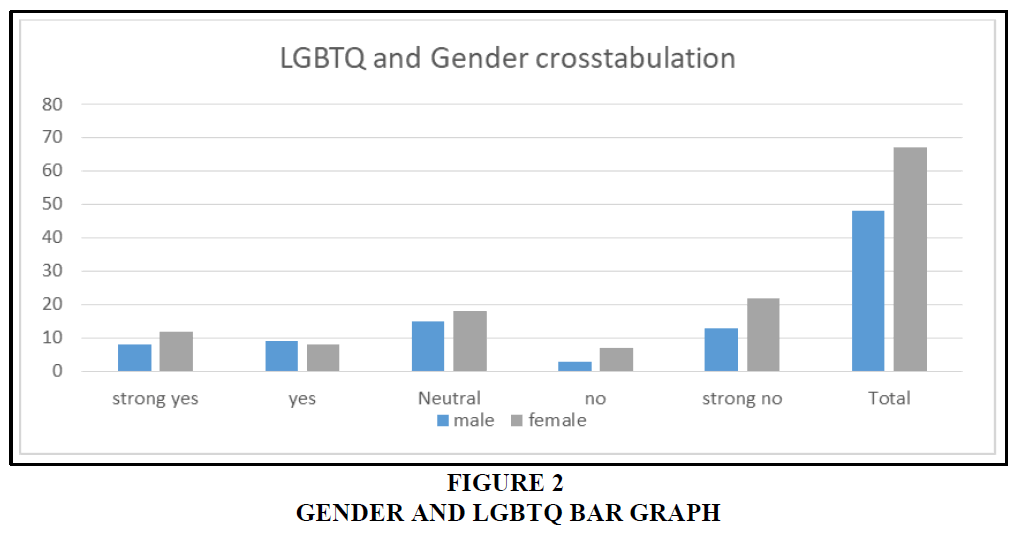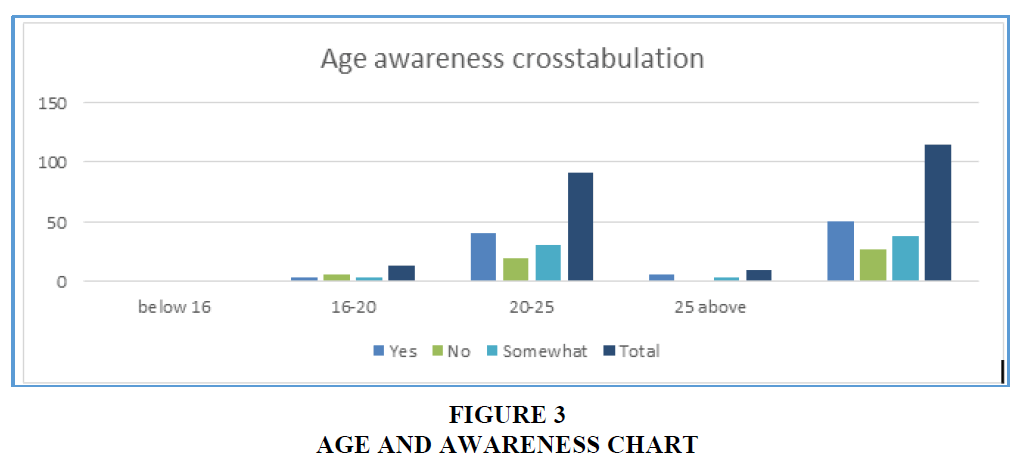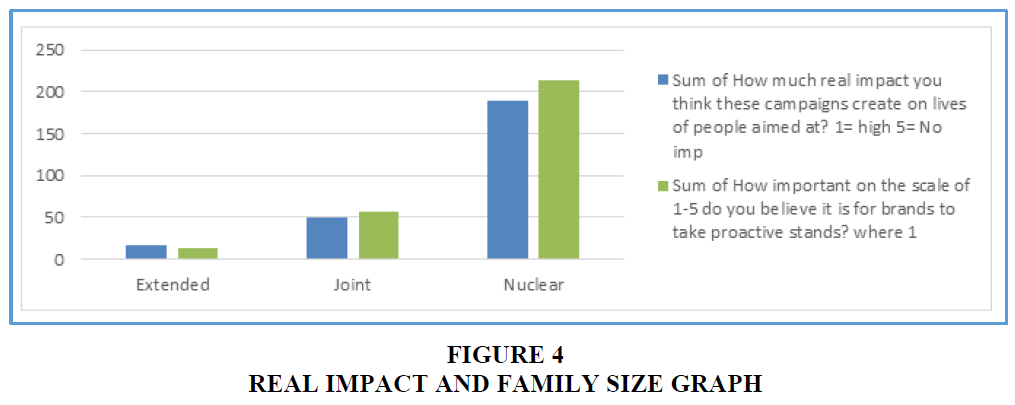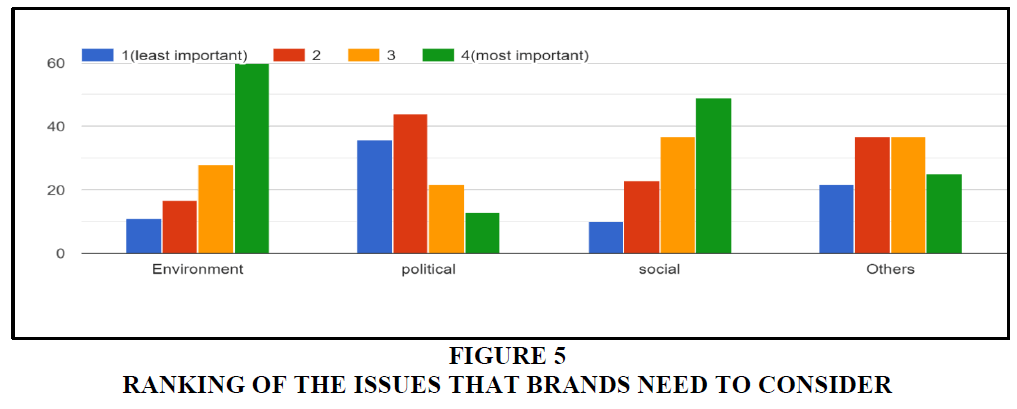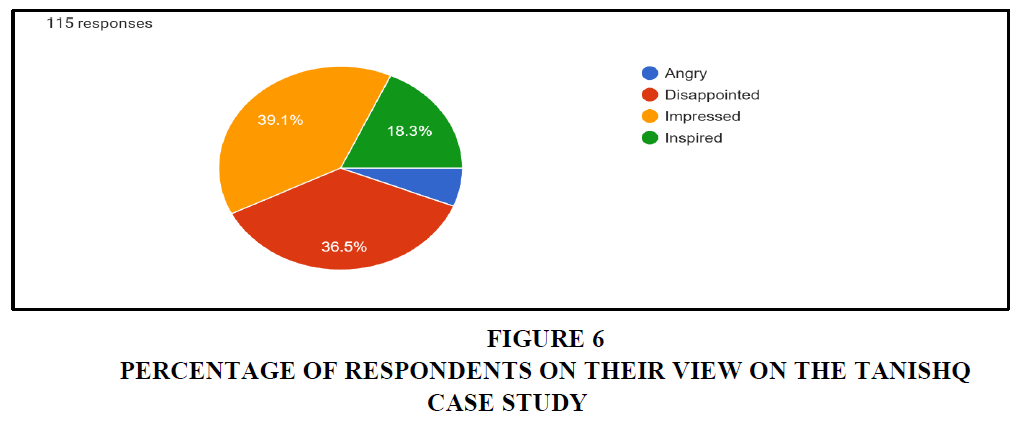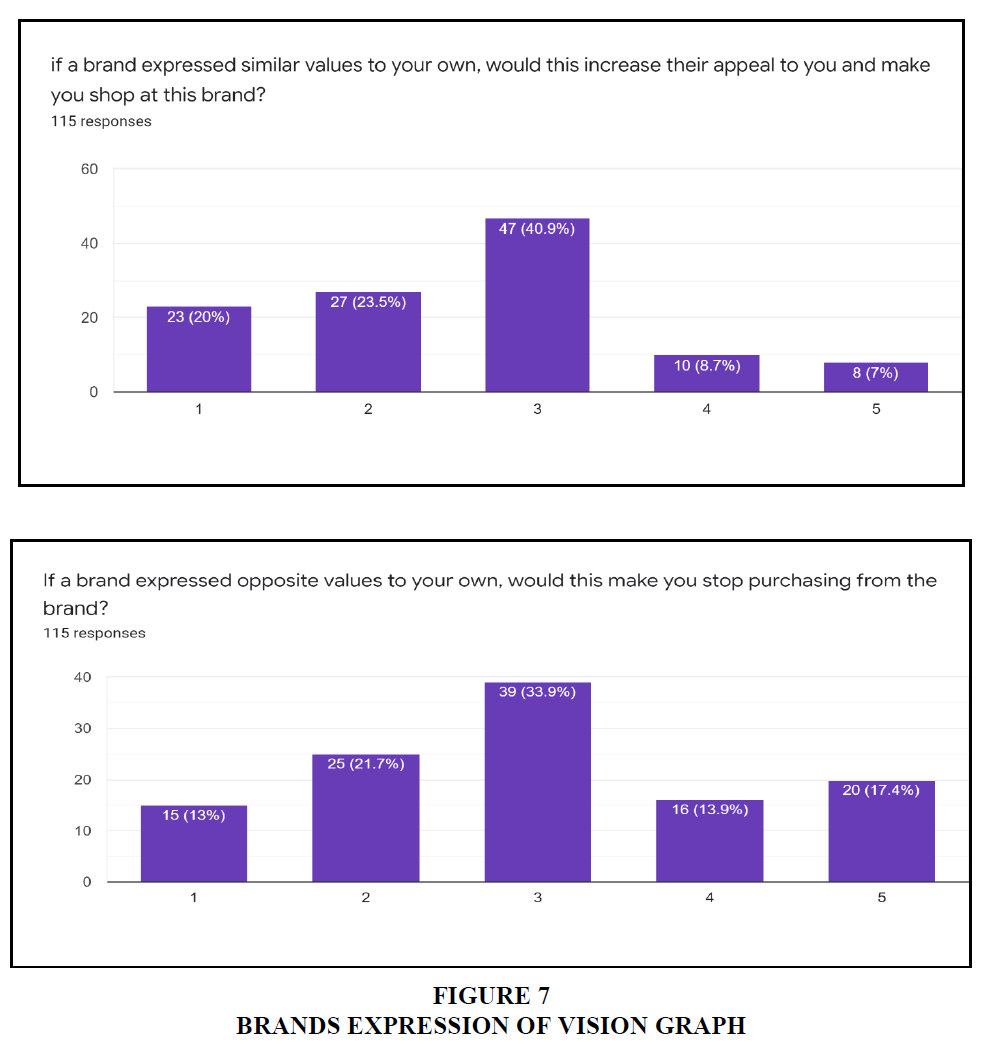Research Article: 2022 Vol: 26 Issue: 2
Impact of Brand Activism on Millennials and Generation Z
Pardeep Kumar, Keshav Mahavidyalaya University of Delhi
Citation Information: Kumar, P. (2022). Impact of brand activism on millennials and generation z. Academy of Marketing Studies Journal, 26(2), 1-14.
Abstract
This study focuses on the awareness level, the relevance and the impact that brand activism has on the Millennials and Generation Z. The motivation is to contribute to activism that provides value both to the consumers and the brands. The significant areas of activism are being interpreted to give a fair view and better design marketing campaigns to increase revenue. A consumer perspective questionnaire was developed keeping in mind various dimensions and issues that require the attention of the masses and needs to be addressed. With the help of cross tabs analysis, the demographic variables were to analyse and draw valuable conclusions for the brands. Using them can help to create more insightful and impactful campaigns. Taking stands on debatable issues is not enough, so making them more compelling was the focus of the study.
Keywords
Millennials; Generation Z; Brand Activism; Generation Y; Generation Alpha.
Introduction
In 2018, Philip Kotler & Christian Sarkar established brand activism as a marketing and business management concept for use in various industries. Specifically, they defined it as "a phenomenon defined as a company's attempt to solve global challenges that its future customers and employees care about." A company's or brand's commitment to a community is demonstrated by its or its products' vision, beliefs, goals, communication, and behaviour toward that community."
"Brand Activism consists of commercial attempts to promote, obstruct, or direct social, political, economic, and environmental change or stasis with the intent to encourage or impede improvements in society," according to the American Marketing Association (AMA). The concern and action made by organisations towards the social, environmental, and political issues that are widespread in the society can be stated as follows:
Generation Z is defined as the generation born after the millennium. "Generation Z, or Generation Z for short, is the demographic cohort that follows the Millennials and precedes Generation Alpha in the population. The mid-to-late 1990s are used as starting birth years, while the early 2010s are used as ending birth years by researchers and the popular media. This is a generation of digital natives," says the author.
Millennials, often known as Generation Y (or simply Gen Y), are the generational cohort that comes after Generation X, but before Generation Z. They are the largest generation in the world. Generally, researchers and the public media consider the early 1980s as starting birth years and the mid-1990s to early 2000s as ending birth years, with the years 1981 to 1996 is commonly acknowledged as the defining generational range.
By 2025, Millennials will account for three-quarters of the world's working population. In the next decade, the increase in India's working-age population will account for more than half of the overall rise in Asia's working-age population. To invest and consume, they are taking ground-breaking approaches. Eventually, the future of the market and the enterprises involved will depend on Millennials' ability to sustain additional expansion. Many brands may need to contemplate considerable reworking of their current strategy to adapt to the changes brought about by Millennials' habits and viewpoints.
Concept Application: Global and National Perspective
Due to the proliferation of knowledge and globalization, Generation Z and Millennials are more informed and conscious customers. They want to read reviews before making purchases, from something as insignificant as a toothbrush to something as significant as a new car. As a result, establishing a position in the minds of highly dynamic and knowledgeable consumers is not a simple task. When customers regularly scrutinize brands for their positions on global and local issues, this is called brand monitoring. Additionally, brand activism provides a competitive advantage and an edge over conventional products, pricing, and emotional promotions and increases the perceived worth of the brand by the consumer.
Since Millennials and Generation Z account for most decision-makers and actual consumers, it is critical for brands to connect their vision and values with those of their target demographic. The study's findings will also show the significance of brand activism for the customer base and the number of benefits that can expect from implementing the phenomena.
One factor is the rise of social media and digital marketing, which have contributed to the trend. When a brand message is sent to a consumer indirectly through a friend or acquaintance, it has an exponentially more significant impact. With its ability to share information and apparent intimacy, social media provides the ideal venue for putting this strategy into action. In addition, presenting a campaign as a reaction to a significant social issue is the quickest and most cost-effective approach to ensure that it becomes viral and is voluntarily shared by customers.
Another element to consider is consumers' desire for authenticity in a society that appears to be increasingly molded by lies and conflict. Brands must work hard to earn and maintain the trust of their customers, particularly with the younger generation, which is increasingly purchasing based on their values. To keep up with the market, brands must abandon their conventional neutrality and establish a brand ethos; they must express an opinion because they are perceived as accurate.
Nike Dream Crazy
Nike was highly successful as a result of this line of thinking. Not only was their campaign cleverly planned to coincide with a crisis in the Black Lives Matter movement, but it also resonated with their target audience, which is primarily young and inclined to support Kaepernick's principles.
Even though the advertisement did not specifically mention it, the NFL star's kneeling during the national anthem was already a symbol for the movement because of his actions. Nike executed a tremendous and well-thought-out approach that resulted in the perception among the general public that wearing clothing with its emblem on it was nearly equivalent to making a political statement. When connecting with consumers emotionally, leveraging general social topics is a sure-fire way to do it. However, if addressed incorrectly, that connection is likely to turn septic.
The temporary nature of brand activism is applied as a marketing strategy. Although publicly supporting famous social problems is a sure-fire way to connect with consumers emotionally, doing so incorrectly can result in the connection being septic due to the incorrect approach. In either case, taking an activist stance will ultimately result in a part of your customers being disenchanted with your brand, and for most businesses, this is a risk that should not take lightly.
As part of San Francisco's Pride Week celebrations in 2014, Burger King introduced the Proud Whopper, which received a mixed reception from the local community. However, the premise of the marketing stunt was pleasant but uninspiring: Burger King demonstrated their support for LGBTQ+ pride by changing the packaging of their flagship Whopper burger to carry the colours of the LGBTQ+ rainbow flag, and upon opening it, you discovered the same old burger with the message "We Are All the Same Inside." The notion of the marketing gimmick was pleasant, albeit a little uninspiring: they were attempting to portray acceptance and tolerance as a whole through this method.
Overall, it was a moderately successful marketing plan, as the campaign gained a great deal of attention on the internet in the process. Aside from being a delicious sandwich, the Pride Whopper may also be used as a case study to explore the ethical dilemmas when corporations become involved in charitable endeavours. The conflict between the pursuit of a higher purpose and profit is at the heart of the subject matter's argument. Companies that take a stand on social issues nearly always have a positive impact due to their vast reach. When a well-known business becomes actively involved in supporting a movement associated with tolerance and pluralism, it suggests a general shift in the right direction, which is exactly what Millennials are searching for.
Tata Tea mocks armchair activism through the production of the 'Jaago Re' version 2.0 series. However, instead of reacting after issues have manifested themselves, the brand mobilizes Indians to take action against simmering situations like horrific rapes and farmer suicides well before their occurrence will address the attitude of pseudo-activism and retaliation. The film Jaago re 1 was quite successful in creating a lasting impression on the minds of the audience members.
Mahindra & Mahindra decided to launch a vast crowd-funding campaign that would be digitally-driven to enhance the living conditions of farmers in India. M&M started its #SeedTheRise effort collaborating with Flying Cursor Interactive, a digital marketing consultancy, ensuring that donations totaling up to INR 1 crore reached the organisation. Mahindra chose to match this commitment by contributing another crore to provide additional assistance to farmers in need.
NGO “Make Love not Scars” was intended to prohibit the use of toilet cleaning acids, which are readily available in India and are responsible for countless acid assaults each year. In collaboration with Ogilvy & Mather, the non-governmental organisation #EndAcidSale initiated a petition campaign to end the sale of acids. A video depicting an acid attack survivor giving beauty instructions on how to apply eyeliner and lipstick and how to get rid of black spots is part of the campaign's visual component. When she concludes these tips, she compares the price of acid (INR 30) to the cost of cosmetics (INR 100), and she encourages her viewers to sign the petition to stop the sale of acid.
The Red ramp project launched by Johnson Tiles, an initiative to make India a more accessible country for people with disabilities. Johnson Tiles constructed a red-tiled ramp on the Kiri beach in Goa to enable disabled individuals to access the beach and feel the waves lap at their feet while they were there. This ad movie, which features three protagonists who each face a different physical barrier, explains how this ramp has allowed them to realize a long-held desire of visiting the beach. Visitors to the campaign website are encouraged to sign a petition to make India more accessible to people with disabilities.
Framework of Research Paper
This research paper is divided into Six Sections
1. Conceptual Framework
2. Review of Literature
3. Objectives
4. Research Design
5. Data Analysis
6. Results, Conclusion and Recommendations
Conceptual Framework
Demographics need, perception, justifications, value creation, purchasing behaviour, and reasons for failure are all variables to consider. Gender, age, educational background, family type, family income, occupation, and personality type are demographics to consider how the demand for brand activism arose and the causes for this development. Perceptions of Millennials and Generation Z about brands that take a solid political stance are discussed in this article, how brand activism adds value to a consumer's experience and its actual impact on purchasing decisions and the resulting sales.
There are four forms of purchasing behavior that are commonly seen.
1. Buying behaviour that is difficult to predict.
2. Purchasing behaviour that reduces dissonance.
3. Purchases made regularly.
4. A desire for variety in one's behaviour.
According to the other side of the issue, corporations taking an activist stance are often deceptive and can even cause harm to the social movements that they are intended to assist. A company must identify its image with the ideals of a particular social action to sell its product using brand activism as a marketing tactic. As a result, if the brand's primary purpose is to fill its pockets rather than to make a genuine contribution to the social movement, it results in a connection between the brand and the direction from which the brand reaps disproportionate benefits.
It's the same with any excellent ethical dilemma: there are no genuine solutions, only tricky decisions to make. For individuals who feel that brand activism can make a positive difference in developing a better society, it is essential to conduct thorough research and hold corporations accountable when they fail to live up to their promises wherever possible. The motivations and strategy used in brand activism are essential considerations. While brand activism will not be entirely responsible for a better society, it will be far preferable to a world in which the most prominent voices have nothing positive to say about the future of humanity.
Review of Literature
Vredenburg et al. (2020) According to the findings, brand policies are crucial in managing perceptions of authenticity. This encompasses anything from engaging in public-private collaborations that provide legitimacy to social change activities to maintaining authentic brand activism. This has been evaluated by third-party certifications and suggests that brands implement particular practices, measurable language standards, and other marketing best practices in their marketing.
Hermann (2020). The insights gained during this research will help the researcher provide recommendations for business professionals involved in developing activist-minded campaigns on behalf of corporate brands.
Omar & Jørgensen (2020) This study aimed to determine the types of consumer-brand interactions that are formed as a result of brand activism efforts. The research concludes by examining how customers react when firms take a social or political stance in their advertising. Customers also build different forms of relationships with the business depending on whether or not they agree with the company's brand activism campaign.
Mukherjee & Althuizen (2020) In a similar vein, when opposing groups have more negative opinions, it is critical to understand how such partisan splits may affect companies that stand on divisive socio-political issues such as abortion and immigration. Consequently, they tried to determine the consequences of brand activism on consumer attitudes, intentions, and behaviour in this article.
Broberg & Doshoris (2020) With this study, we understood how consumers perceive the phenomenon of brand activism and how they respond when they encounter it. According to the findings of this study, it is not expected that brands will engage in brand activism. On the other hand, Respondents believe that it is a positive development when brands engage in brand activism. As a result, the respondents provided inconclusive explanations as to why it was perceived as positive, illustrating the complexities of the phenomena.
Bruder & Lübeck (2019) The findings demonstrated that social brand activism affects six of the seven brand personality characteristics assessed in the study. The authors contribute to the existing theory by showing that social brand activism has a beneficial impact on a company's product or service personality. According to the findings, the brand-cause fit may operate as a moderator by impacting the effectiveness of social brand activism in either a good or negative way in certain situations. In other cases, it may not play a significant part in the interplay at all. These contradicting findings are consistent with the results of earlier research. The study also presents practical implications for managers and marketers who want to improve their brand by using social brand activism commercials in their advertising campaigns.
Gray (2019) this study aims to investigate the relationship between brand activism campaign characteristics and social media participation, specifically on the Twitter platform. Tweets from eight different brands, including Nike, Reebok, Under Armour, Puma, Always, Yoplait, Procter & Gamble, and Airbnb, were collected and analysed using the RStudio and Twitter APIs, with each brand's association to the brand's activism campaign being investigated separately. A survey was also issued to obtain information on a variety of factors specific to each campaign. The association between social media engagement metrics favourites and retweets and the characteristics of tweets and movements was investigated using a Poisson regression analysis method. According to the brand, content produced by brands that wish to contribute to the activism area, particularly on Twitter, should be targeted at people rather than society as a whole.
Manfredi-Sánchez (2019) citizen-consumers who demanded from companies a sort of participation and shared responsibility in political and social concerns and that corporate social responsibility is channelled towards a holistic strategy of reputation and trust should be listened to and accommodated.
As a result, activist brands seek to be a part of the aesthetics of authenticity in the consumption capitalism and values that exist today. A new avenue of inquiry has been opened up due to this, and we believe it will be essential in the coming years.
Benner (2018) At the very least, the vast majority of respondents advocated for an "improved process." There is apathy among advertising agencies, and not everyone will be devoted to improving how businesses deal with social movements in the future. It is possible, however, that the industry as a whole can be motivated to improve its client relations, empower its employees in new ways, and get ahead of a cultural shift toward activism that is already taking place, that it will be able to improve its reputation as a mishandler of cultural events.
Abdallah et al (2018) This article aims to investigate how brand activism in advertising (in this case, specifically femvertising) influences male consumers' sentiments about the brand that is the subject of the advertisement. Specifically, the findings of this article reveal that communication with males about the brand image can be either boosted or diminished, depending on the level of authenticity displayed and the inclusion and participation of other men and other women.
Kemper & Ballantine (2017). Individuals' preferences for gift cards versus cash with the same exchange value will differ depending on their roles (i.e., givers versus receivers) and money perceptions (i.e., whether they emphasize the exchange value of money or the additional meaning of money) according to the research.
Dauvergne (2017) This study highlights the necessity of distinguishing between the influence on corporate policies and markets and the effectiveness of activist campaigns in terms of environmental effects when evaluating activist campaigns.
Romani et al. (2015) Two studies with adult consumers were conducted to examine the validity of a specific theoretical model that described consumer anti-brand activism. It has been established that two mechanisms at work interact with one another to induce consumer anti-brand activist behaviour. Consumers who learn about and judge the moral transgressions of brands and their parent companies develop negative attitudes toward those brands, which motivates them to engage in anti-brand activity against such brands. Second, it is anticipated that the extent of perceived consumer empathy determines the degree of these feelings in response to anti-brand actions. The findings give scholars, managers, and activists tools for enhancing their understanding of and response to anti-brand acts, which they can use to their advantage.
Kozinets (2014) Even though it has become a popular buzzword, there is still a great deal of ambiguity surrounding engagement, or as some scholars prefer to call it, "consumer-brand engagement." That brand awareness and loyalty were no longer sufficient, and that managers now needed to seek emotional commitment and brand love from their customers.
Wymer (2010) corporate marketing actions may counteract social marketing messages directed at specific individuals in some areas of public health concern. Traditional social marketing strategies may be rendered useless if commercial marketing activities contribute to creating an environment that encourages and supports harmful habits. An investigation of the role of social marketing in these situations is presented in this article.
Objective of the Study
The present study was planned with the following research objectives.
1. To determine the awareness level on brand activism.
2. To find out issues focussed earlier and which needs to be considered.
3. To find business implications so that brands can learn valuable lessons from the findings.
Research Methodology
The research design refers to the framework of research methods and techniques chosen by a researcher. It helps to plan the research and answer the research questions. The study aims to find out such factors that impact brand activism. The research focuses on the key factors that affect consumers' choices and tries to understand what the most important ones of the identified factors are. The respondents are the people who are identified as people by themselves or by their peer group. They consist of students and working professionals. Most of them identify in the age group of 16 to 25 years. Millennials and Generation Z., belong to these two categories. Hence the research can be generalized regarding Millennials and Generation Z. Students and working professionals from the city of Ludhiana and nearby cities were the target population.
Data Analysis and Interpretation
Data analysis is defined as cleaning, transforming, and modelling data to find helpful information for business decision-making. Data Analysis aims to extract useful information from data and make the decision based upon the data analysis Table 1.
| Table 1 Gender Wise Composition | ||
| Gender | No. of Respondents | Percentage % |
| Male | 48 | 41.73% |
| Female | 67 | 58.26% |
| Total | 115 | 100% |
Gender
The gender composition of survey respondents is represented in the table above. Following the data in the preceding table, 41.73 per cent of respondents are male, and 58.26 per cent of respondents are female. Indicates that 48 men and 67 women answered the survey's questions, for a total of 115 participants. According to the research presented above, females are more optimistic and inclined to support brands that consider these efforts and participate in them Figure 1.
Impact
We can see from this bar graph that females are more likely than males to believe that if local brands participate in these initiatives, it will benefit them in the long run. Males, on the other side, do not think that the campaigns have any actual impact and are more of a publicity ploy, which supports their lack of confidence in them being chosen by local brands. Brands that deal with women's products and services may place a greater emphasis on issues relating to brand activism Table 2.
| Table 2 Gender View on Tanishq Jewellery Campaign | |||||
| Gender | Inspired | Impressed | Disappointed | Angry | Total |
| Male | 7 | 19 | 6 | 16 | 48 |
| Female | 14 | 26 | 1 | 26 | 67 |
| Total | 21 | 45 | 7 | 42 | 116 |
Gender View on Tanishq Jewellery Campaign
In the case of Tanishq, the majority of the population holds a negative attitude about the campaign, although females have a more favourable attitude toward it. As a result, the overall number of inspired and impressed individuals is 21+45=66, with 40 females. In this way, females express themselves strongly and with tremendous conviction; as the number of furious females increases, social issues must be dealt with care Figure 2.
LGBTQ Social Issue
Positive approaches to LGBTQ issues are more prevalent among females (N=29), with males (N=16) following in the footsteps of their female counterparts in terms of negative approaches. The overwhelming majority is opposed to the proposal, with a small number of people taking neutral stance. Gender does not seem to make much of a difference in the opinions expressed when it comes to the LGBTQ community Figure 3.
Awareness
The respondents are classified according to their age and level of awareness, as shown in the column chart and table above. The majority of respondents (N=91) are between the ages of 20 and 25, with 45 per cent of respondents being aware and 34 per cent being partially aware. In this case, we might argue that awareness has increased with age. It is possible to discern a rising trend Figure 4.
Family type
The clustered bar chart and table above categorise survey respondents according to their family size and the authentic influence they believe brands have had on their lives due to brand activism. The majority of those who answered belong to a nuclear family, followed by a combined family and finally an extended family. We can see that people from both nuclear and joint families believe that brands must take a proactive stance on social issues. While it is less significant in the extended family, their perception of it as having a real impact is more important. There may not be a direct relationship, but it can uncover some connections in a more extensive investigation Figure 5.
Issues
According to the graph above, the most significant issue on which brands must concentrate is the environment, followed by social and political issues, which have the same share, and then a sort of neutral stance on the other issues. As seen in the graph, we can see that political issues receive a clear majority indicating that they are the least essential issue in the respondents' eyes. Environmental concerns are the most prevalent, while political problems are the most diminutive among those who responded Table 3.
| Table 3 Personality Thoughts | |||||
| Personality type | Inspired | Impressed | Disappointed | Angry | Total |
| Extrovert | 2 | 16 | 4 | 12 | 34 |
| Introvert | 9 | 11 | 0 | 12 | 32 |
| Ambivert | 10 | 18 | 3 | 18 | 49 |
| Total | 21 | 45 | 7 | 42 | 115 |
Personality Type View on Tanishq Campaign
While the extroverts are less upset and angry (N=16), they are also less inspired and impressed, with the majority of extroverts being impressed (N=16). Introverts are more likely to get furious than other people (N=12). Furthermore, in the case of ambiverts, we can observe a balanced approach with a majority in both the impressed and the furious (N=18). The ambivert personality type is represented by 49 individuals, who are followed by extroverts and then introverts (Thaler & Helmig, 2013). Overall, the side of being inspired and impressed outnumbers the side of being disappointed and upset Figure 6.
Brand Expression
Forty per cent of the respondents have expressed a neutral opinion on whether the brand's ideology connects with their ideology. As a result, they have not made a purchasing decision. If their views are compatible, 43 per cent of people will purchase the product, but 40 per cent of people will not buy if their ideals are incompatible Figure 7.
Conclusion
Demographics’ need, perception, justifications, value creation, purchasing behaviour, and reasons for failure are all variables to consider. Gender, age, educational background, family type, family income, occupation, and personality type are demographics to consider how the demand for brand activism arose and the causes for this development. Perceptions of Millennials and Generation Z about brands that take a solid political stance are discussed in this article, how brand activism adds value to a consumer's experience and its actual impact on purchasing decisions and the resulting sales. The study has compared the Research Objective with the
Results
1. To determine the awareness level of the respondents: -The awareness level is moderately high in Post graduates from Under graduates.
2. To find out which issues have been focussed earlier and which needs to be considered: - Earlier social issues were more focused; now a shift towards sustainability and more relevant social aspects needs to be done.
3. To find business implications so that brands can learn valuable lessons from the findings: - Mostly females tend to be more inclined towards the activist brands and brands should consider sustainability.
The study has found that females have higher optimism and inclination towards brands that consider and engage themselves in brand activism campaigns. This paper searched that adults is the target audience need to be tackled efficiently and carefully by the brands; as awareness has increased in the adults. Another finding is that in the Millennials and Z Generation has lowest priorities in political system and highest priority is found in environmental concern. It is, therefore, recommended by the study that brands should focus more on environmental impact, followed by social. The study has seen increase rate of literacy level in the Millennials and Generation Z; so the brands targeted them and dealing with them should be careful and sensitive about prevailing issues. Those brands targeted higher income group should be focused on brand activism by understanding their needs, perceptions and priorities. The paper indicates also that addressing social aspects and value system are on the top of the priorities of the brands to gain momentum in the marketing, as respondents belonging to a neutral family support the campaigns related to social aspects better than the extended and common family types.
Brands should focus on the specific aspects when developing a campaign to bring in more impact and attention. Firstly, the gender they are trying to impact with the campaign, females tend to get more impacted and believe that these are crucial steps, so female-oriented products and services must consider brand activism. Secondly, Sustainability is what the majority of respondents look forward to. So, it can be an edge for the first movers. Thirdly, Brands, especially local ones, can avoid sensitive topics related to the LGBT community while can help them at the backend.
References
Abdallah, L. K., Jacobson, C., Liasse, D., & Lund, E. (2019). Femvertising and its effects on brand image. Strategic Brand Management: Master Papers, 4.
Benner, R. E. (2018). Brand Activism: Working Toward Progressive Representations of Social Movements (Doctoral dissertation, University of Oregon).
Broberg, C. P., & Doshoris, I. (2020). When Business Becomes Politics-A Study of Consumers' Perceptions and Responses to Brand Activism.
Bruder, C., & Lübeck, H. (2019). It’s Time To Become Brave-The Phenomenon of Social Brand Activism.
Dauvergne, P. (2017). Is the power of brand-focused activism rising? The case of tropical deforestation. The Journal of Environment & Development, 26(2), 135-155.
Gray, A.A. (2019). Brands Take a Stand for Good: The Effect of Brand Activism on Social Media Engagement.
Hermann, A. (2020). Ensuring Brand Activism in Integrated Marketing Communications Campaigns Resonates with Millennial Consumers.
Omar, Z., & Jørgensen, S. (2020). Pride and Prejudice: a study on the various types of consumer-brand relationships that brand activism campaigns form.
Kozinets, R. V. (2014). Social brand engagement: A new idea. NIM Marketing Intelligence Review, 6(2), 8-15.
Manfredi-Sánchez, J. L. (2019). Brand activism.
Mukherjee, S., & Althuizen, N. (2020). Brand activism: Does courting controversy help or hurt a brand? International journal of research in marketing, 37(4), 772-788.
Romani, S., Grappi, S., Zarantonello, L., & Bagozzi, R. P. (2015). The revenge of the consumer! How brand moral violations lead to consumer anti-brand activism. Journal of Brand Management, 22(8), 658-672.
Vredenburg, J., Kapitan, S., Spry, A., & Kemper, J. A. (2020). Brands taking a stand: Authentic brand activism or woke washing?Journal of public policy & marketing, 39(4), 444-460.
Thaler, J., & Helmig, B. (2013). Promoting good behavior: does social and temporal framing make a difference? Voluntas: international journal of voluntary and nonprofit organizations, 24(4), 1006-1036.
Received: 05-Jan-2022, Manuscript No. AMSJ-22-10957; Editor assigned: 07-Jan-2022, PreQC No. AMSJ-22-10957(PQ); Reviewed: 21-Jan-2022, QC No. AMSJ-22-10957; Revised: 27-Jan-2022, Manuscript No. AMSJ-22-10957(R); Published: 31-Jan-2022
